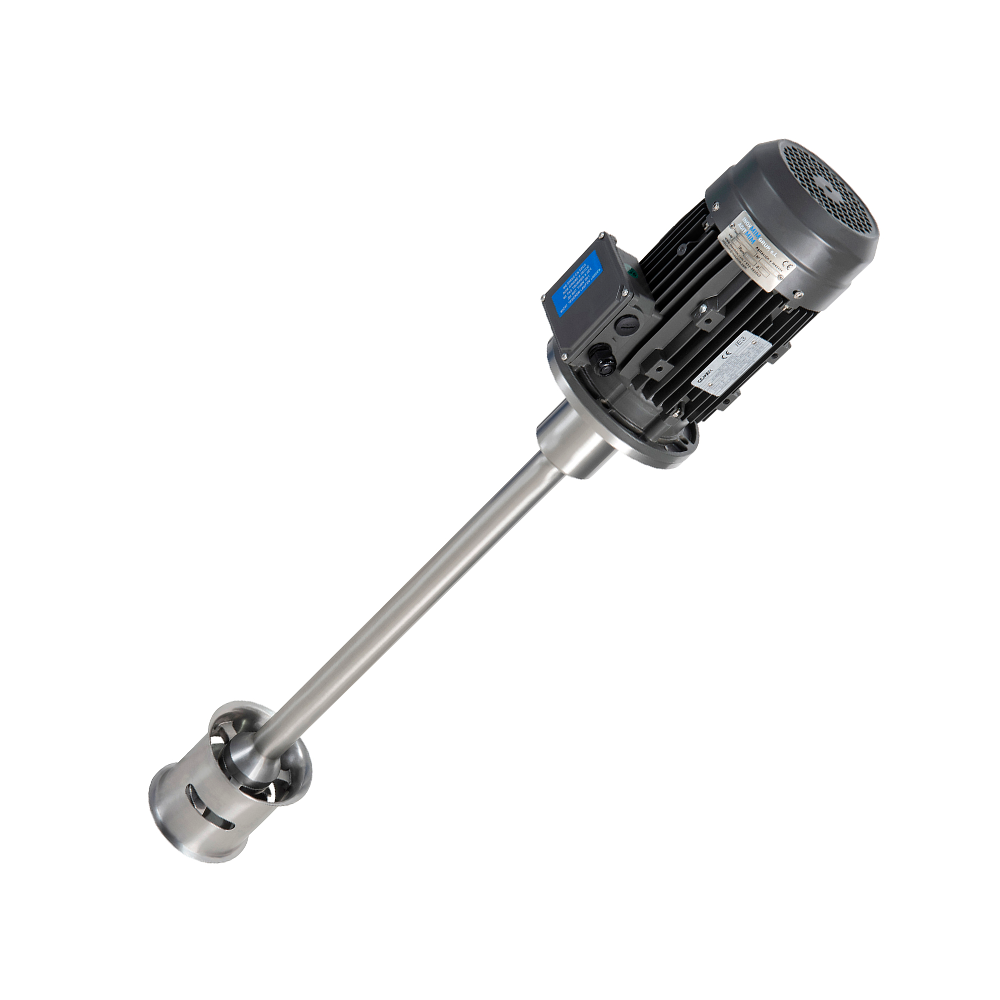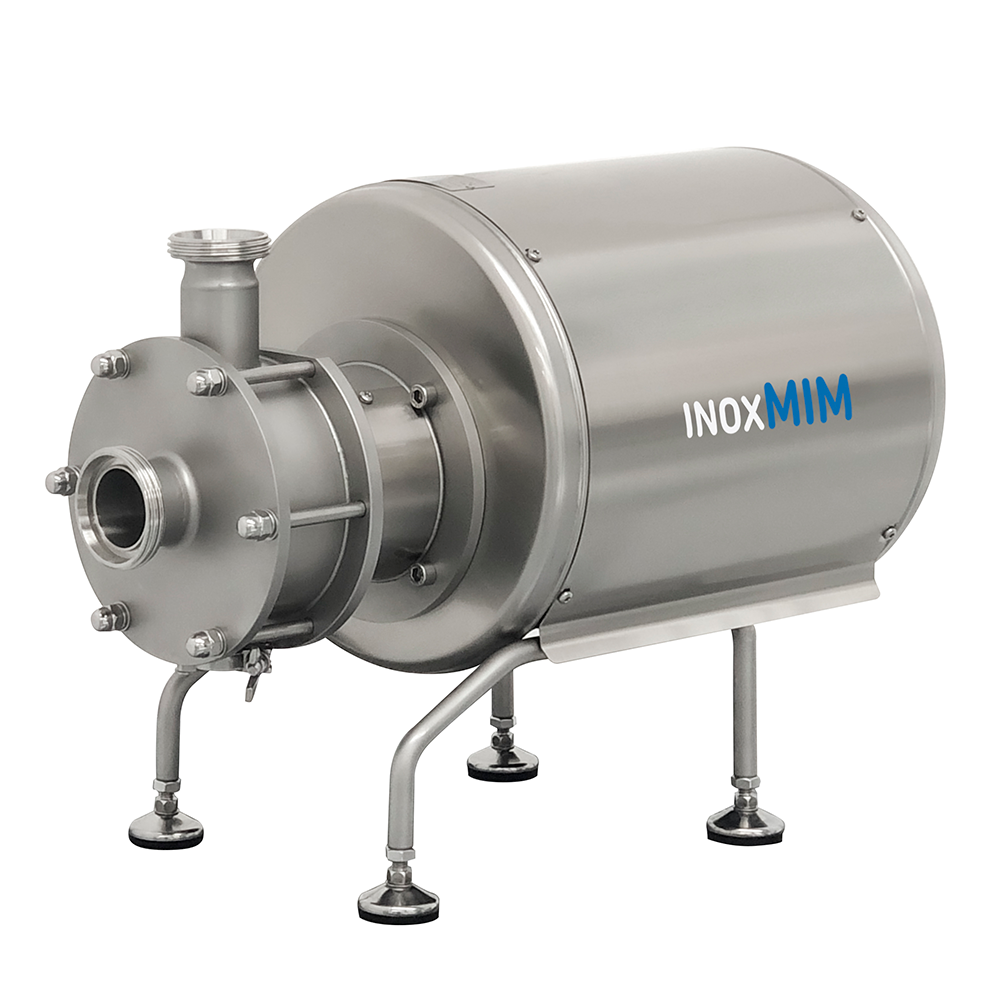Operating principle of an industrial mixer
From a process engineering standpoint, an industrial mixer is a system that transfers mechanical energy to the fluid to establish the required flow regime—axial, radial or mixed—to disperse, emulsify or homogenise liquid components and/or fine solids.
The outcome depends on three variables:
-
Impeller/head geometry
-
Rotational regime (rpm and torque)
-
Operating conditions (viscosity, temperature, vacuum/pressure)
At InoxMIM we apply these principles in hygienic equipment built in AISI 316L, with single or double mechanical seals (double seals can be thermosiphon-cooled where needed) and full CIP/SIP compatibility for in-place cleaning.
What happens inside the tank or the line during mixing?
Which industrial mixer models are in our range?
Below are six core machines that address most scenarios in food & beverage, cosmetics, pharmaceuticals and fine chemicals. The aim is not to list catalogues, but to explain when each architecture is the right fit and what a plant engineer can expect in terms of result and operability.
TURBINE Vertical Mixer

A low-to-medium shear vertical mixer that generates strong axial suction and a stable tank circulation without the need for baffles. Its channelled design prevents bulk swirling and minimises air entrainment—critical for sauces, food bases, cosmetic pre-mixes and additive solutions. In small to medium vessels it delivers rapid, repeatable homogenisation with very simple maintenance.
EMV Vertical Emulsifier

The EMV employs a rotor–stator head (one or two stages) to produce fine emulsions and uniform dispersions up to medium–high viscosities. It can operate under vacuum or overpressure and is fully CIP/SIP sanitiseable. Choose EMV when you need a step-change versus conventional mixing: smaller droplet size, no lumps and long-term stability in creams, gels, emulsified sauces, or when dissolving gums and resins.
EM Vertical Emulsifier

Also based on the rotor–stator principle, the EM provides a multi-stage configuration with interchangeable heads (slotted, perforated, toothed) to tune shear intensity. It is the right choice when the recipe demands intense dispersion or tighter particle-size targets than a single-stage vertical can achieve. It balances installed power, process control and emulsion quality.
EMF Bottom Entry Emulsifier

Installed at the base of the reactor, the EMF creates a controlled shear zone that drives recirculation from the bottom upwards. This eliminates dead zones and product build-up and improves heat transfer by sweeping the tank bottom. With single or pressurised double seals, it handles high viscosities, shortens cycle times, and excels in cosmetics and pharmaceutical reactors where drainability and CIP cleanliness are essential.
EML/EMLT Inline Emulsifier

These units process while they pump, enabling recirculation or continuous production with consistent results batch after batch. The EMLT, with multi-tooth heads, delivers higher shear for more viscous or demanding formulations. Preferred when scaling throughput without compromising quality: installed in a bypass or recirculation loop, they accommodate flow/temperature instrumentation and simplify CIP/SIP.
Microniser MICRO

A high-shear machine operating at high rpm, capable of achieving sub-10 μm particle sizes and, in suitable formulations, below 1 μm. Its double, cooled mechanical seal and sanitary connections support heat-sensitive products and repeated cleaning cycles. Specify MICRO when final texture and stability depend directly on particle finish: fine suspensions, micro-encapsulates, premium pharma/cosmetic emulsions and technical bases.
Related articles:
How do I choose between vertical, bottom-mounted or in-line?
If your goal is low-air homogenisation in small to medium vessels, a TURBINE vertical is efficient and robust. When the formulation requires a true emulsion and droplet-size reduction, an EMV/EM vertical delivers the necessary in-tank shear.
If the bottleneck is dead zones, drainability or bottom sweeping, the EMF solves it by architecture. For continuous production, fewer batch changeovers and tight quality control via recirculation, an EML/EMLT in-line unit is the direct route. And where the specification calls for a very fine, stable particle size, MICRO is the natural candidate.
What does InoxMIM offer in integration and maintenance?
All wetted parts are AISI 316L, with industrial, food-grade or sanitary finishes as required. Equipment is supplied with single or double mechanical seals (cartridge, with pressurised options), VFDs for speed control, and sanitary connections (DIN/CLAMP/SMS). Designs are modular and accessible, reducing MTTR, and our engineering support covers sizing to target viscosity/flow, CIP/SIP validation, and commissioning.
Frequently asked questions about our industrial mixers
Please do not hesitate to contact our sales department
To request information or resolve doubts about any of our equipment or solutions, do not hesitate to fill in the following form with your contact details and you will receive news from one of our sales technicians in a short space of time.




